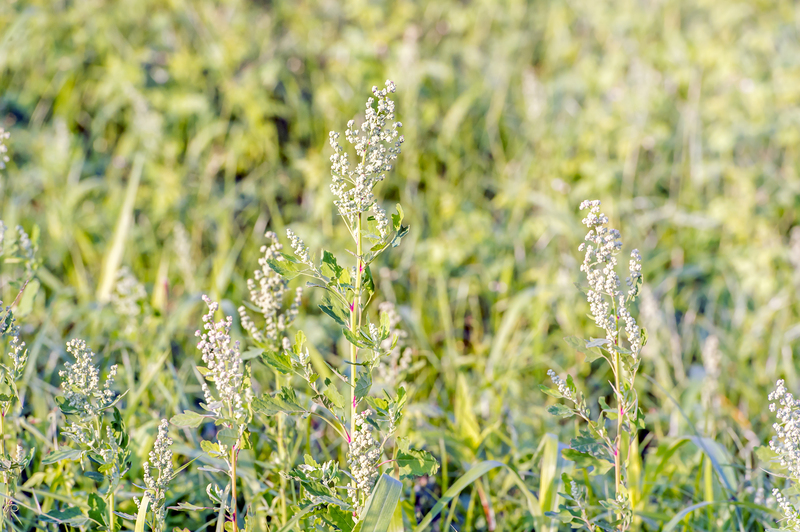Uncover the secrets of successful vertical gardening
Posted on 18/08/2025
Uncover the Secrets of Successful Vertical Gardening
Looking to maximize your gardening potential but limited on space? Vertical gardening could be the revolutionary solution to cultivate a lush, bountiful garden in even the smallest of places. In this comprehensive guide, we'll uncover the secrets of successful vertical gardening, providing you with practical insights, actionable tips, and creative ideas. Whether you're an urban dweller with a small balcony or a homeowner eager for a green wall, this article will show you how to thrive with a vertical garden.

What Is Vertical Gardening?
Vertical gardening is the art and practice of growing plants upward rather than outward, using vertical spaces such as walls, trellises, fences, or specially designed garden structures. This technique offers numerous benefits, from maximizing limited space to creating spectacular green displays and even improving air quality. As urban spaces become increasingly compact, the popularity of vertical gardening systems continues to soar.
Why Choose Vertical Gardening?
- Space Efficiency: Grow more plants in less area.
- Improved Air Quality: Green walls act as natural air filters.
- Pest and Disease Management: Reduces exposure to ground-based pests.
- Aesthetic Appeal: Create stunning lush displays in any vertical space.
- Accessibility: Easier maintenance and harvesting at various heights.
Secrets to a Thriving Vertical Garden
Achieving success with vertical gardening requires a combination of the right techniques, choice of plants, and consistent care. Below, uncover the essential secrets to transforming your vertical gardening ideas into flourishing, living art.
1. Choose the Right Location
The first secret to successful vertical gardening is selecting the perfect spot. Evaluate your available walls, fences, or balcony rails for sunlight exposure, wind protection, and accessibility. Most vegetables, herbs, and flowers need at least 4-6 hours of sunlight daily. South or west-facing walls in the northern hemisphere are usually ideal.
- Assess sunlight: Use a sunlight calculator or simply observe.
- Check for wind: High winds can dry out plants quickly.
- Consider microclimates: Corners may be warmer and more humid.
2. Select the Best Vertical Gardening System
Not all vertical garden systems are created equal. Your optimal setup depends on your space, budget, and plant preferences. Below are popular options:
- Wall Planters: Sturdy containers mounted directly to walls.
- Pocket Planters: Fabric or felt "pockets" designed for soil and plants.
- Trellises & Obelisks: Ideal for climbing vegetables and vining flowers.
- Gutter Gardens: Recycled gutters attached to fences, filled with soil.
- Pallet Gardens: Repurposed wooden pallets lined and filled with soil.
- Modular Living Walls: Professional systems with built-in irrigation and soil support.
*Tip*: Mix and match systems for a dynamic, layered effect!
3. Choose Vertical-Friendly Plants
Selecting the right plant varieties is vital for success in any vertical garden. Some species naturally thrive when grown upright, while others can be trained or pruned accordingly:
- Edibles:
- Tomatoes (especially cherry and grape types)
- Strawberries
- Lettuce and salad greens
- Herbs (basil, thyme, mint, oregano)
- Peas and beans
- Ornamentals:
- Petunias
- Ferns
- Philodendron
- Pothos
- Succulents (sedum, echeveria, sempervivum)
*Remember*: Native species often adapt best to your local conditions.
4. Soil and Substrate Considerations
In a vertical garden, soil quality is even more important than in-ground beds. Due to vertical orientation, soil must retain moisture yet drain well to prevent soggy roots. Choose a lightweight potting mix rich in organic matter. Blend coconut coir, perlite, and compost for an optimal, breathable medium. For modular systems, use substrates specially designed for wall planting.
- Tip: Add a slow-release fertilizer to give plants a steady supply of nutrients.
- Avoid garden soil! It's too heavy and compacts easily.
5. Mastering Watering and Irrigation
Watering is often the biggest challenge in vertical gardening. Gravity causes water to drain quickly from top to bottom, potentially leaving lower rows soggy and upper rows dry. Implement these secrets:
- Drip Irrigation: Automated systems with emitters deliver consistent moisture to all levels.
- Self-watering planters: Reservoirs at the base ensure plants get water over time.
- Group plants by water needs: Prevents over- or under-watering sensitive species.
- Monitor frequently: In warm weather, vertical gardens dry out faster than traditional beds.
*Pro Tip*: Water early in the morning to minimize evaporation.
6. Nutrition and Fertilization
Intensive vertical plantings require regular feeding to support rapid growth and lush foliage. Apply a balanced liquid fertilizer every 2-4 weeks during active growing seasons. For edibles, consider organic options such as fish emulsion or seaweed extract for nutrient-rich harvests.
- Fertilize consistently: High density plantings demand extra nutrition.
- Use slow-release pellets at planting time for sustained feeding.
- Watch for deficiency signs: Yellowing leaves or poor growth signals adjustments are needed.
7. Dealing With Pests and Diseases
A lesser-known secret of vertical farming is its natural resistance to many pests--but no garden is completely immune.
- Inspect plants regularly: Check leaf undersides and stems.
- Encourage beneficial insects: Ladybugs, lacewings, and pollinators keep pests in check.
- Use neem oil or insecticidal soap for targeted treatment.
- Rotate crops: Change plant types seasonally to manage disease cycles.
8. Pruning and Maintenance
Frequent trimming and deadheading keep your vertical garden vigorous and attractive. Remove yellowing leaves, spent flowers, and overgrown vines. Regular pruning also encourages bushier growth and improved airflow, which prevents fungal issues--especially vital for wall-mounted displays with tight spaces.
Creative Vertical Garden Ideas for Every Space
The beauty of vertical gardening lies in its flexibility and adaptability. Get inspired with these creative approaches for indoor and outdoor environments:
- Living Art Walls: Plant succulents and small ferns in frames for a stunning, ever-changing artwork.
- Balcony Bars: Install shelf-like planters along railings for herbs and edible flowers.
- Kitchen Gardens: Hang mason jars or recycled bottles near sunny kitchen windows for ready-to-harvest herbs.
- Privacy Screens: Grow lush green curtains of vines on trellises to block unsightly views and enhance privacy.
- Rain Gutter Rows: Attach multiple gutters to fences or walls for strawberries, lettuces, and compact flowering plants.
DIY Vertical Garden Projects
Excited to start your own vertical garden? Try these simple, affordable DIY setups:
- Pallet Planter: Line a wooden pallet with landscaping fabric, fill with potting mix, and tuck small plants into slats.
- Shoe Organizer Garden: Hang a canvas shoe organizer on a fence; fill pockets with soil and herbs.
- Pipe Planter: Cut PVC pipes lengthwise, secure to walls, and plant low-growing greens.
- Cedar Wall Planter: Build small wooden boxes and stack them in a pyramid against a sunny wall.
Don't forget to personalize your setup with unique colors, decorative stones, or integrated lighting for nighttime ambiance.
Smart Tips for Maximizing Vertical Garden Yields
Use these expert strategies to get the most out of your vertical gardening journey:
- Succession Planting: After harvesting, immediately replant new crops for continuous yields.
- Companion Planting: Grow mutually beneficial plants side by side to deter pests and improve vigor.
- Rotate plant positions: Change crops and layout each season for healthier soil and roots.
- Install reflective surfaces: Place mirrors or light surfaces opposite your garden to increase sunlight.
- Automate irrigation: Simple timers or moisture sensors take the guesswork out of watering.
Common Vertical Gardening Mistakes to Avoid
Many beginners make similar mistakes when attempting vertical garden systems. Learn from these missteps to set your garden up for success:
- Overcrowding: Plants need room to grow. Space plants according to recommendations.
- Poor drainage: Always ensure containers and wall planters can drain excess water.
- Underestimating weight: Wet soil is heavy. Confirm walls and fasteners support full loads.
- Ignoring maintenance: Regularly check for pests, pruning needs, and water leakage.
- Inadequate support for climbers: Use sturdy trellises or netting for vining species.
The Future of Vertical Gardening
With urbanization on the rise and green space at a premium, vertical gardening is the future of sustainable, space-efficient food and ornamental cultivation. Cutting-edge innovations such as smart hydroponic walls, automated fertilization, and modular green roofs are transforming how we think about indoor and outdoor landscapes. Embracing these techniques not only beautifies living spaces but also contributes to resilient, climate-smart cities.
Get Started With Vertical Gardening Today!
Ready to uncover the secrets of thriving vertical gardens? Start small with a DIY planter or jump in with a living wall kit. Remember--every successful vertical gardener began with curiosity and experimentation. Embrace mistakes as learning opportunities, and soon you'll harvest more from less space, enjoy enhanced well-being, and inspire envy from neighbors with your lush, skyward oasis.

Frequently Asked Questions About Vertical Gardening
What is the best vertical gardening system for beginners?
For those just starting, a simple wall planter or hanging pocket system offers easy setup and low maintenance. These can be used for herbs, lettuce, or small succulents, and scaled up as you gain confidence.
How often should I water my vertical garden?
Frequency depends on plant types, weather, and system design, but most vertical gardens need watering at least once daily during summer. Automated drip systems greatly simplify the process.
Can I grow vegetables in a vertical garden?
Absolutely! Many vegetables--such as cherry tomatoes, peas, beans, and dwarf peppers--adapt well to vertical settings with the proper support and care.
What are the main challenges of vertical gardening?
The biggest challenges are watering management, soil fertility, and choosing the right plants. With attention to proper irrigation and nutrition, anyone can enjoy vertical gardening success.
Conclusion: The Vertical Garden Revolution
With creativity, knowledge, and consistent care, you can unlock the full potential of vertical gardening. Remember: success is a journey, not a destination. Choose your site well, match appropriate plants and systems, maintain soil and water balance, and you'll soon have a thriving, sustainable, and beautiful upward garden that truly maximizes your space.
Uncover the secrets of successful vertical gardening and watch as your green sanctuary climbs to new heights--one living wall at a time!

